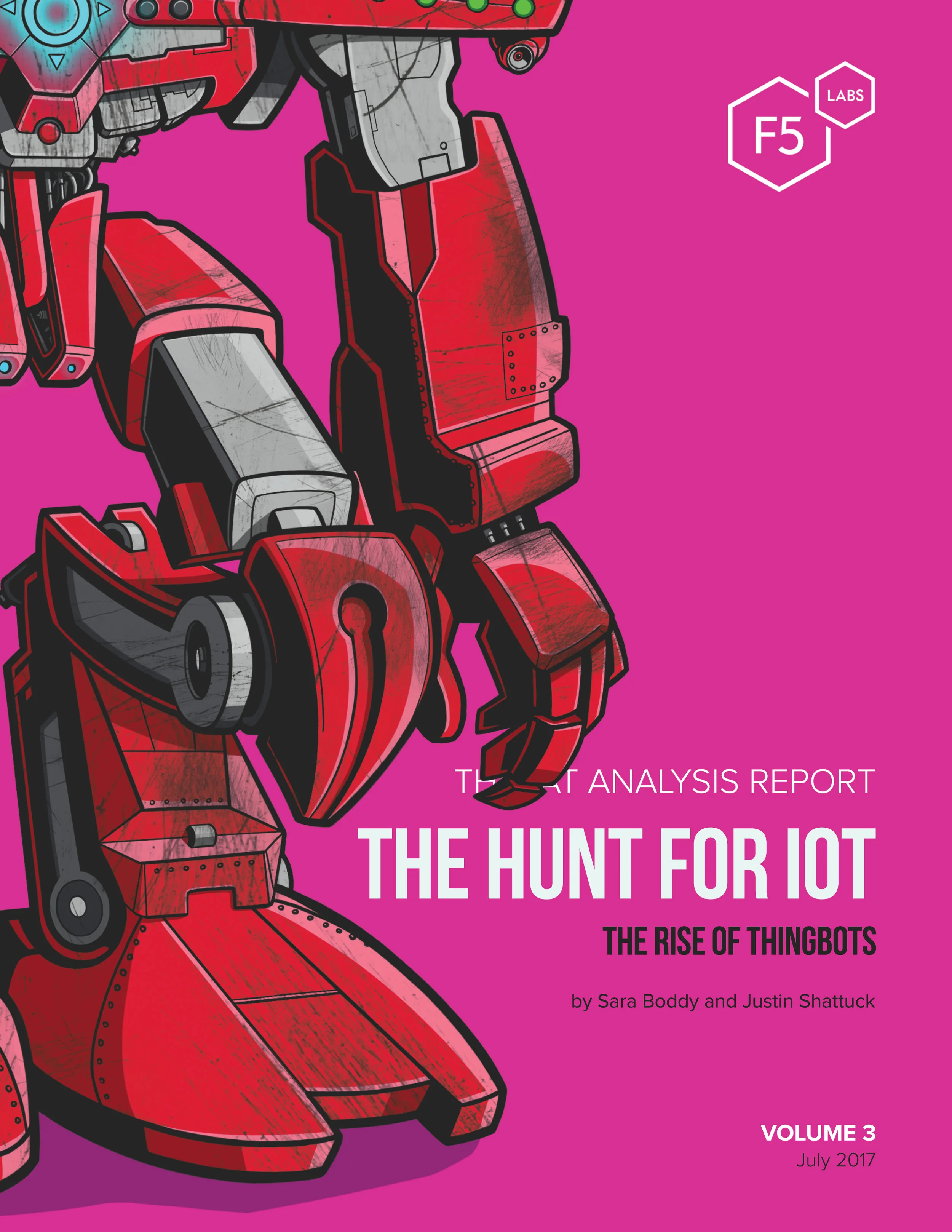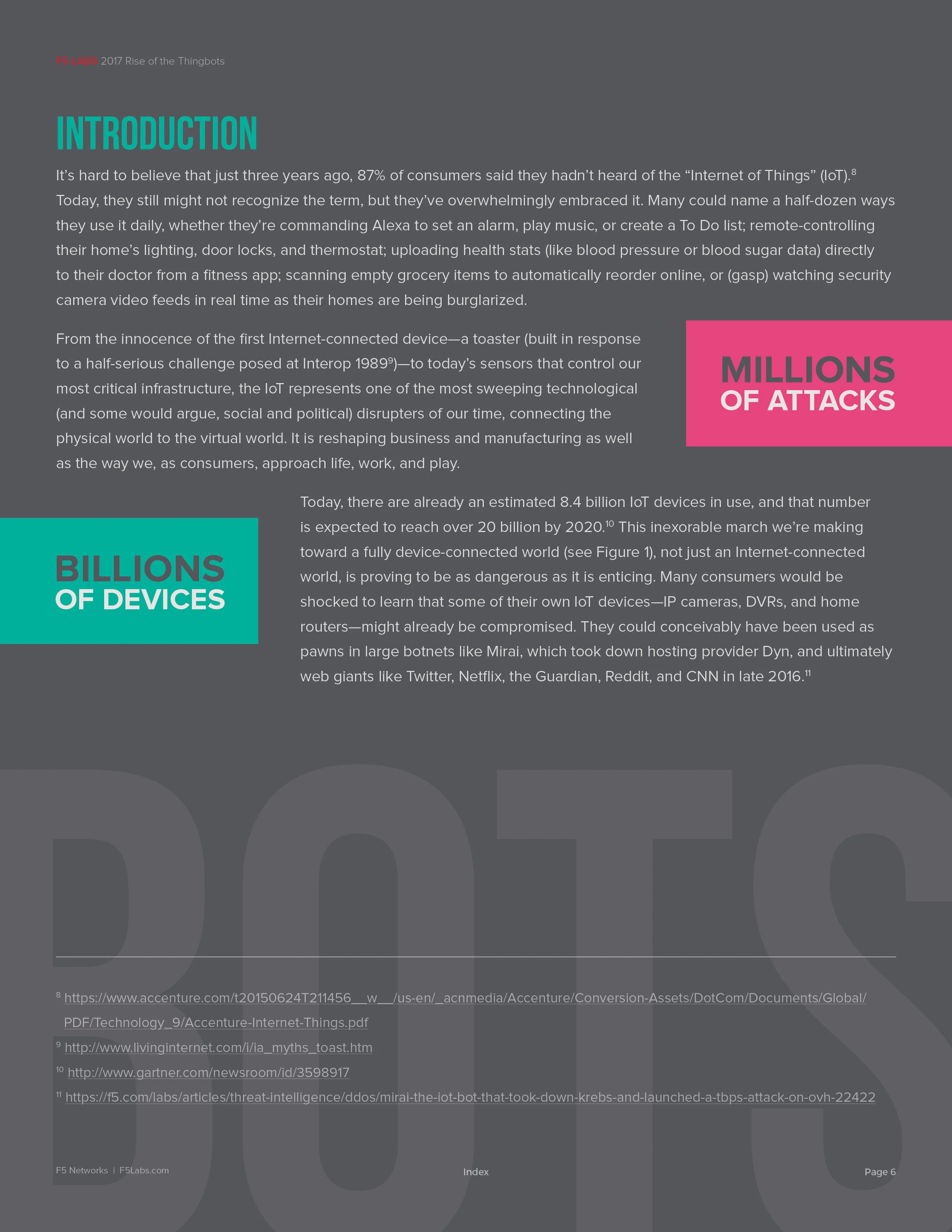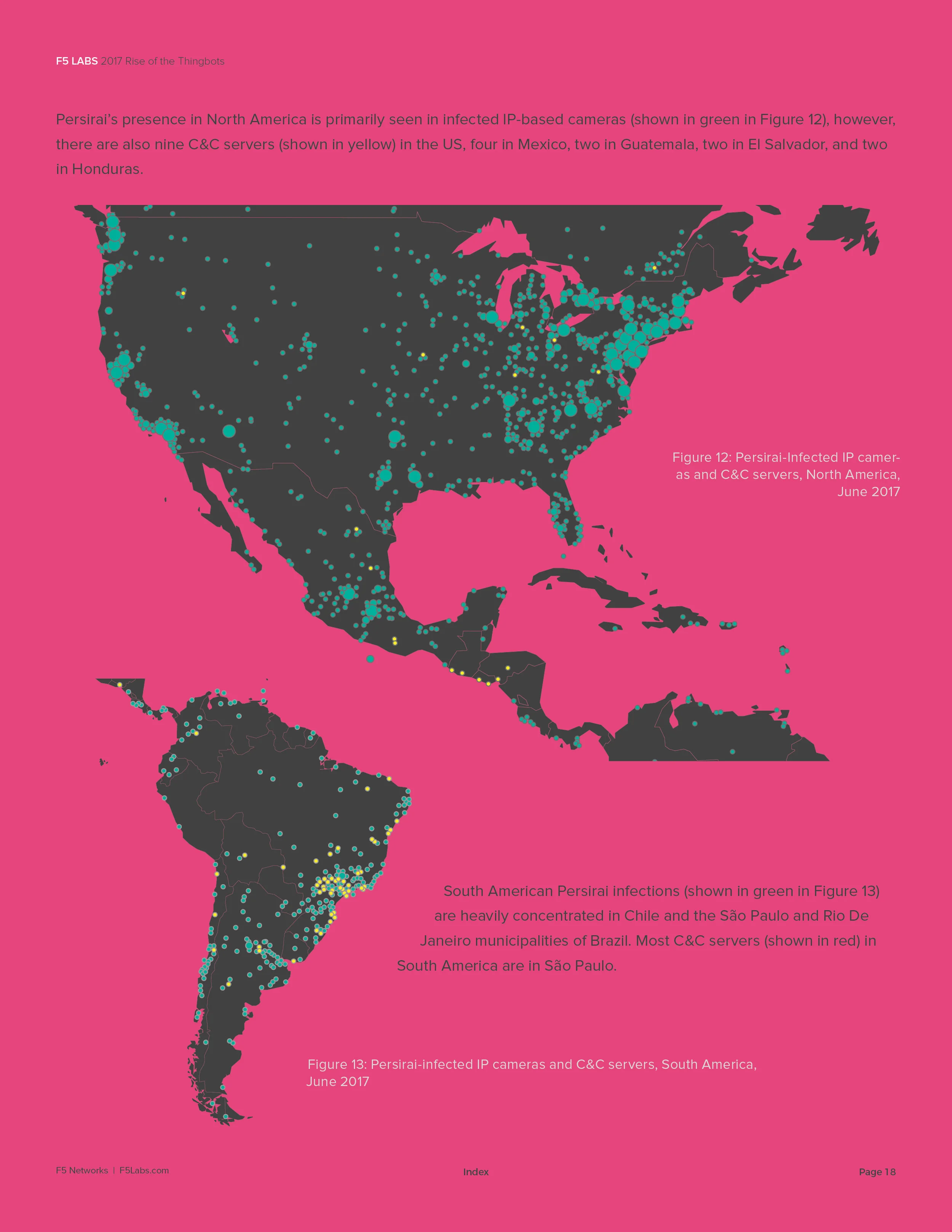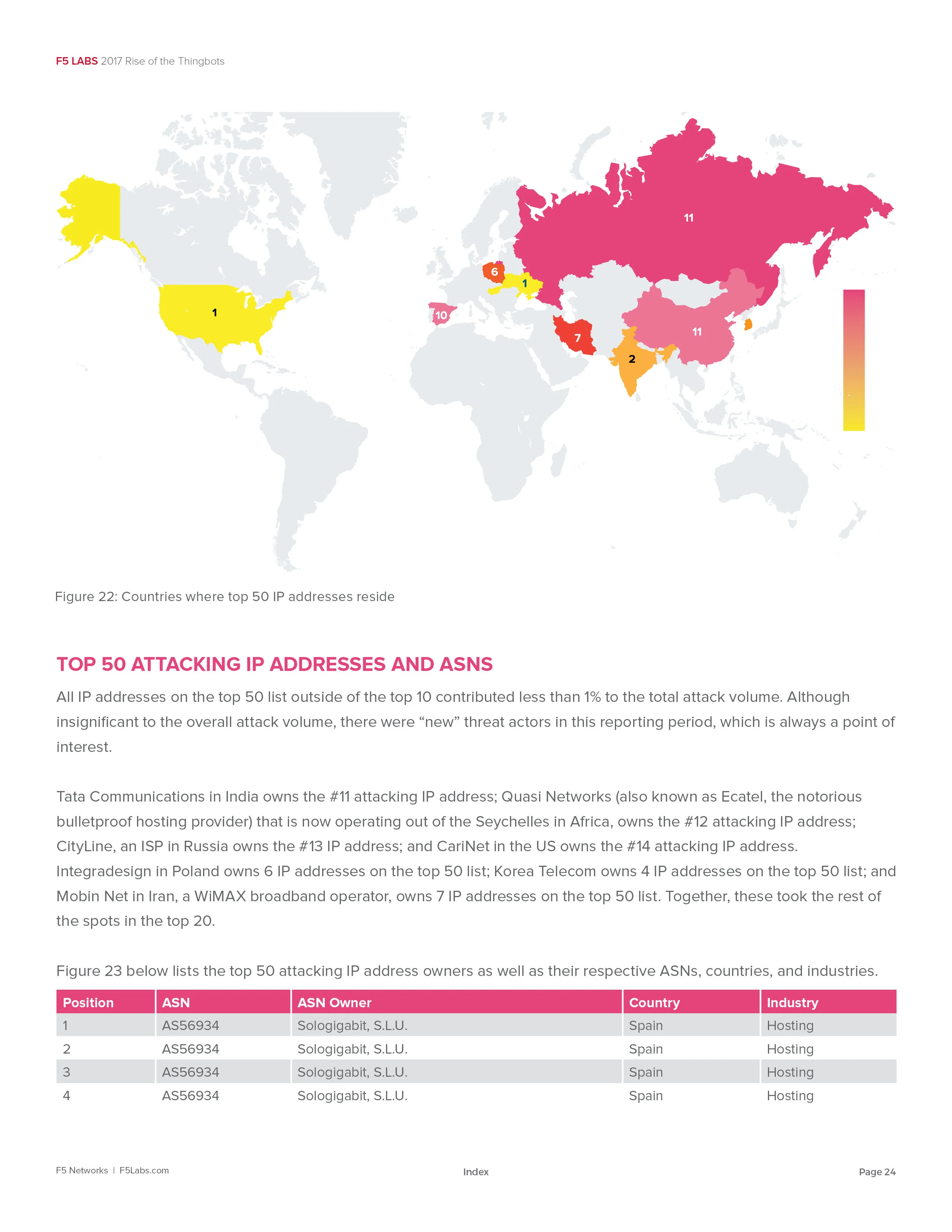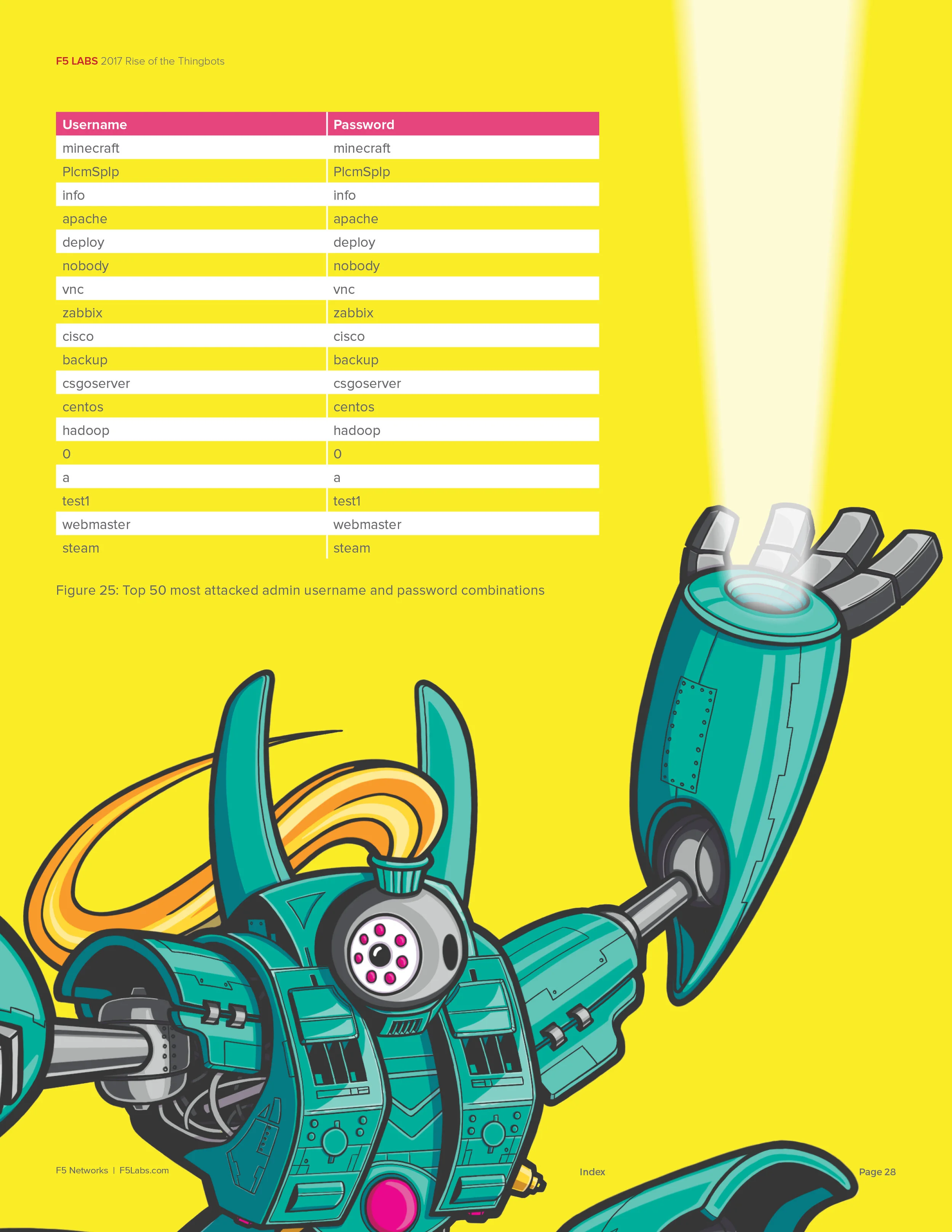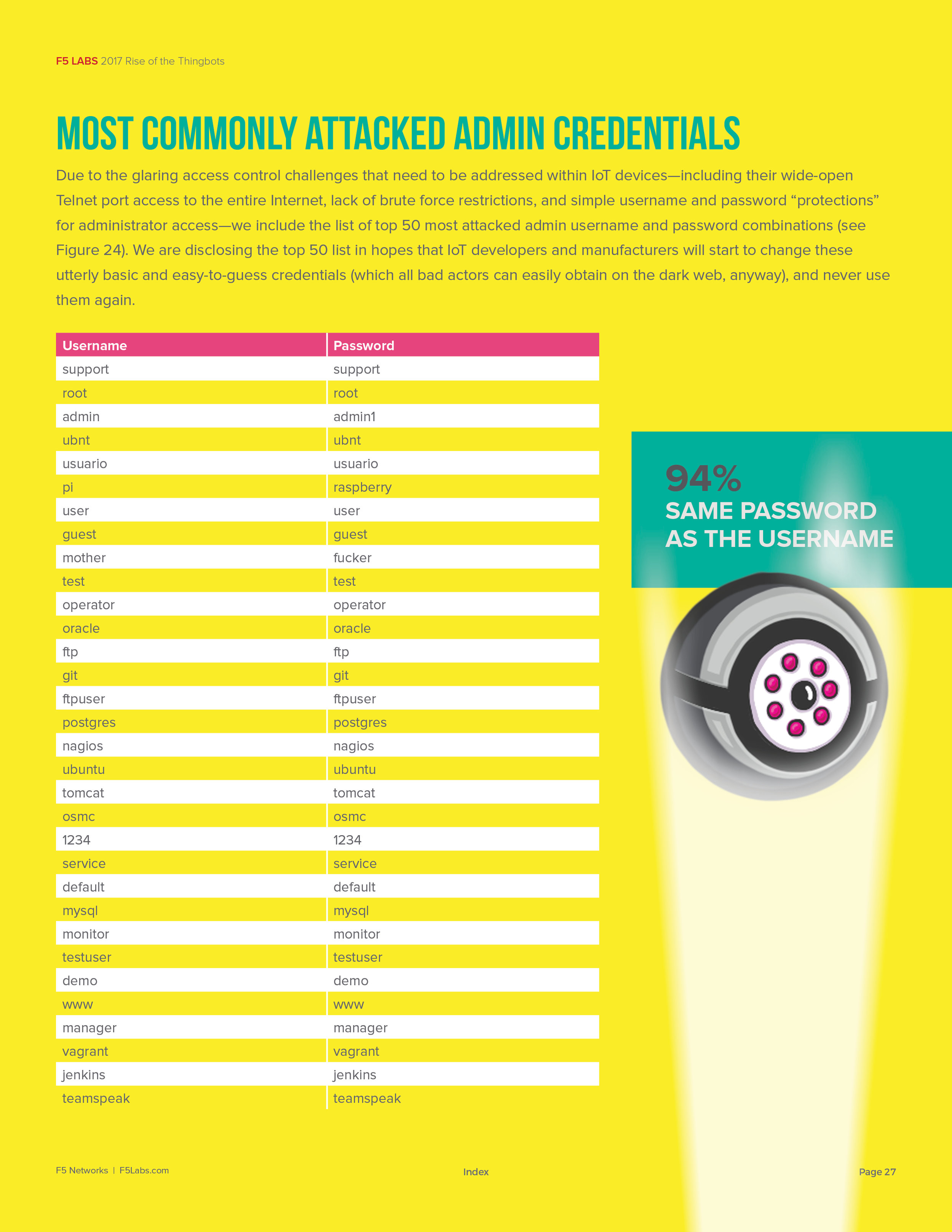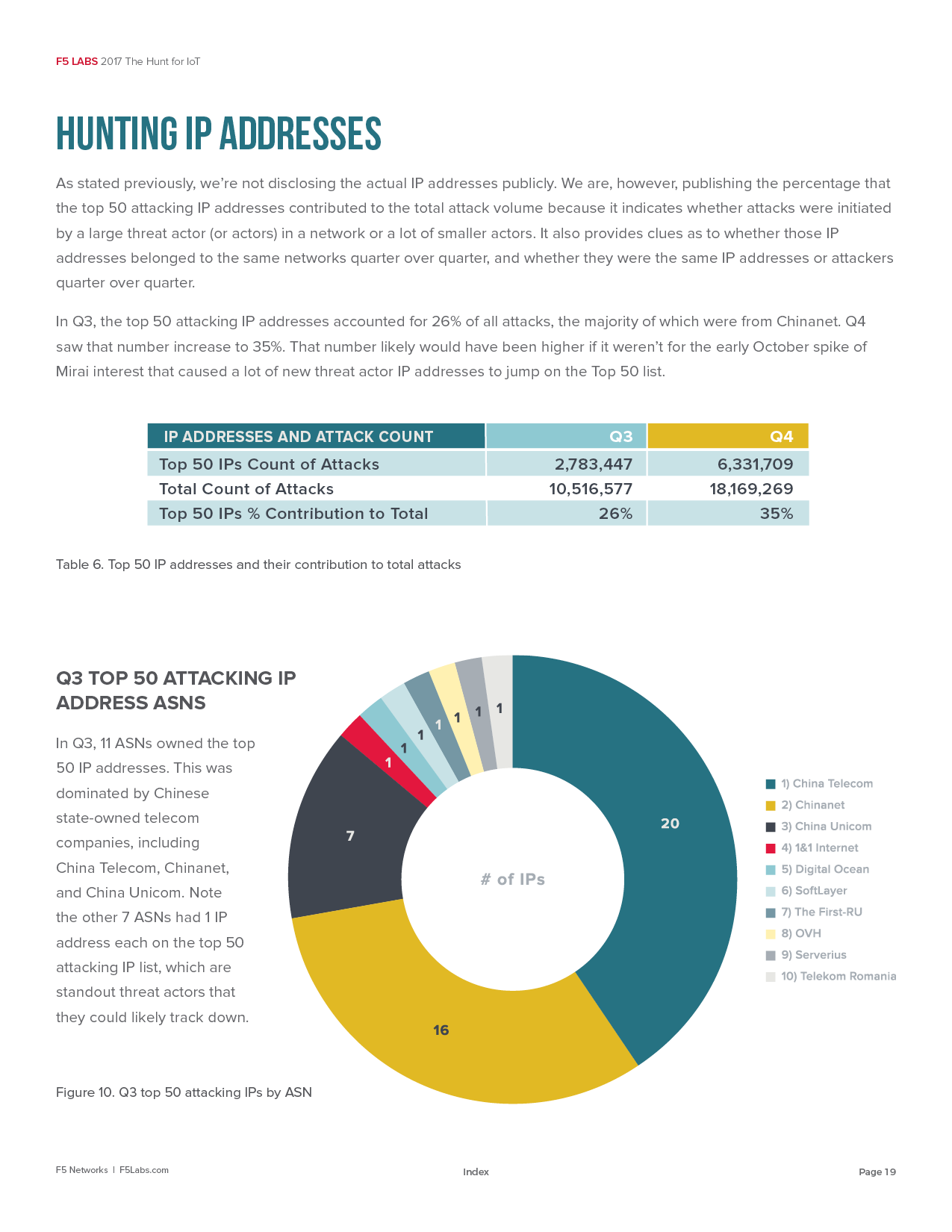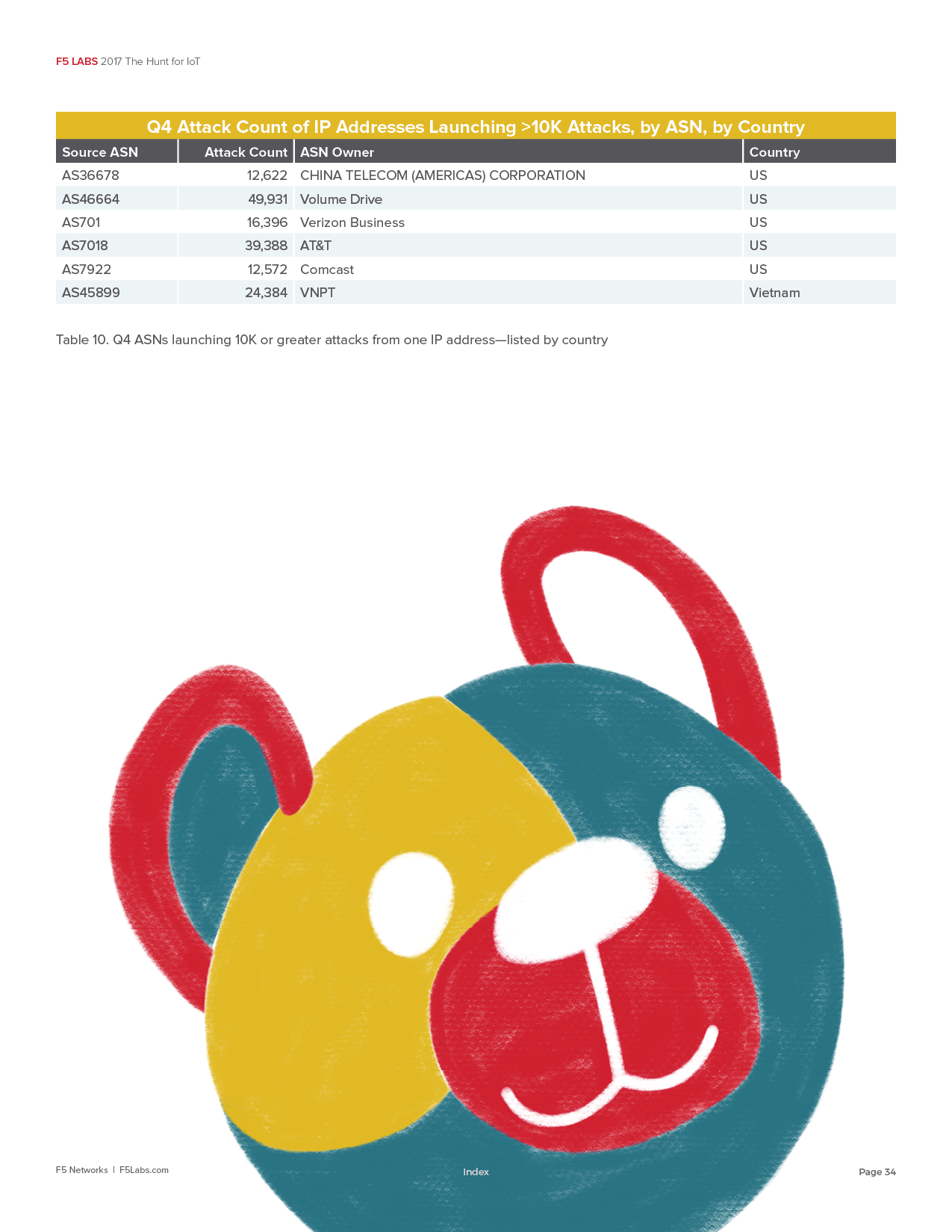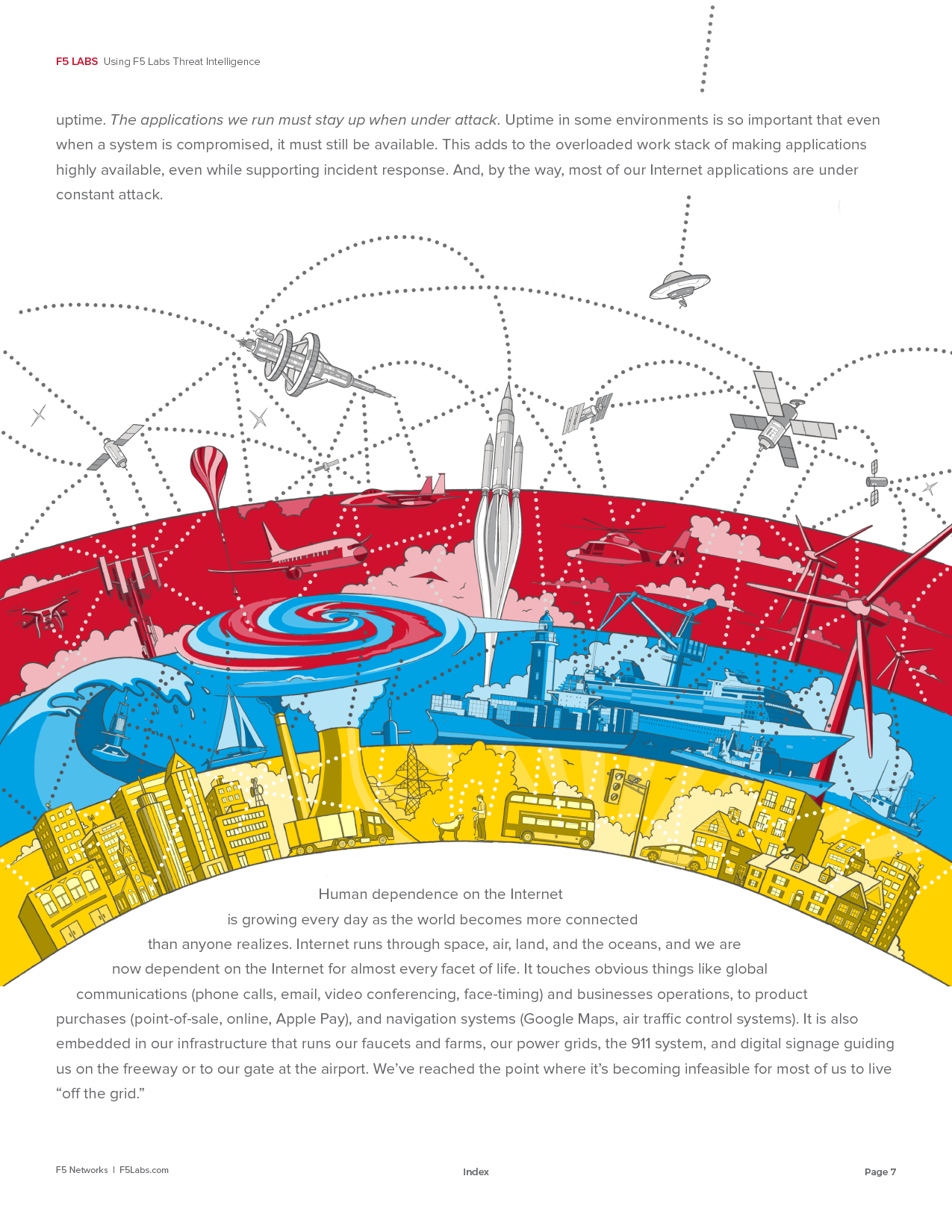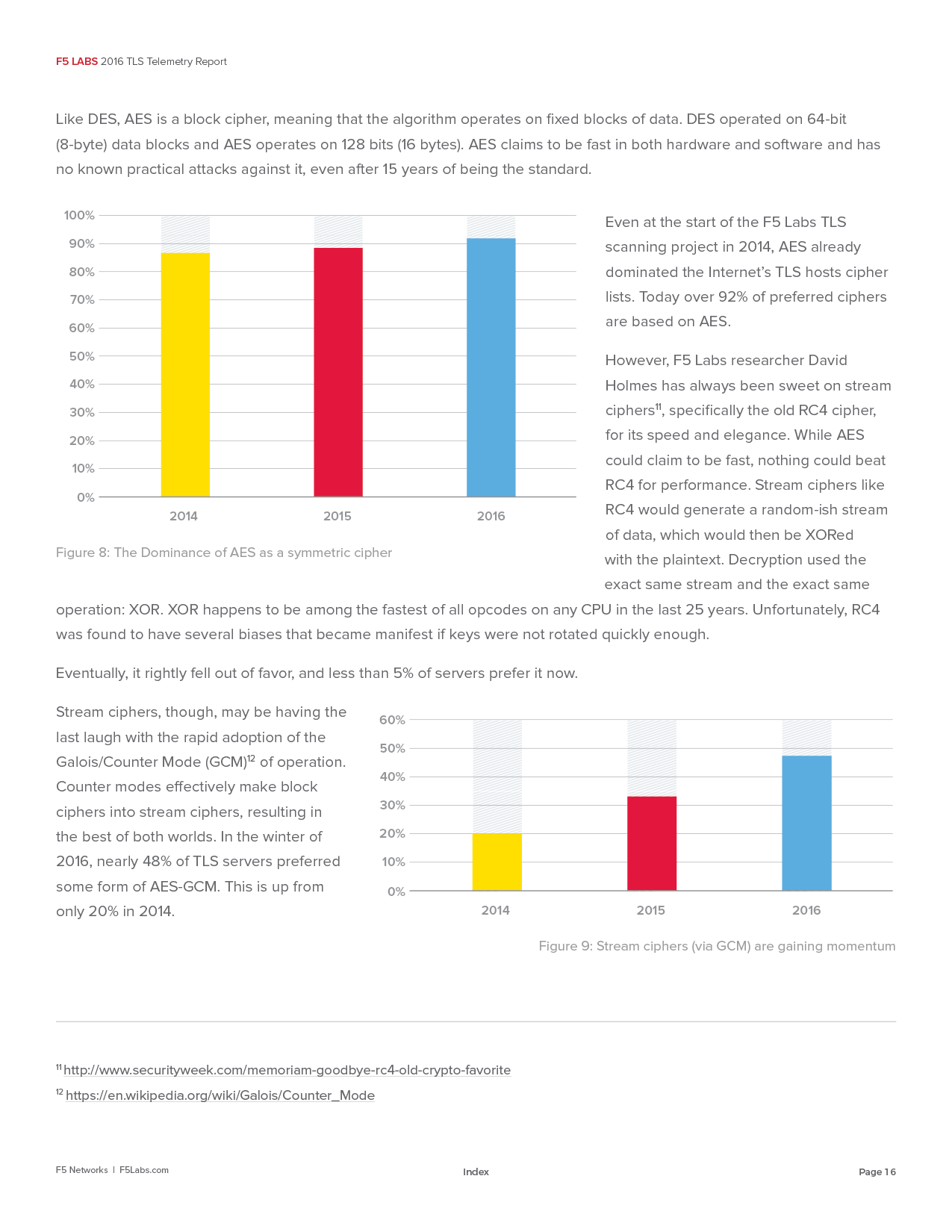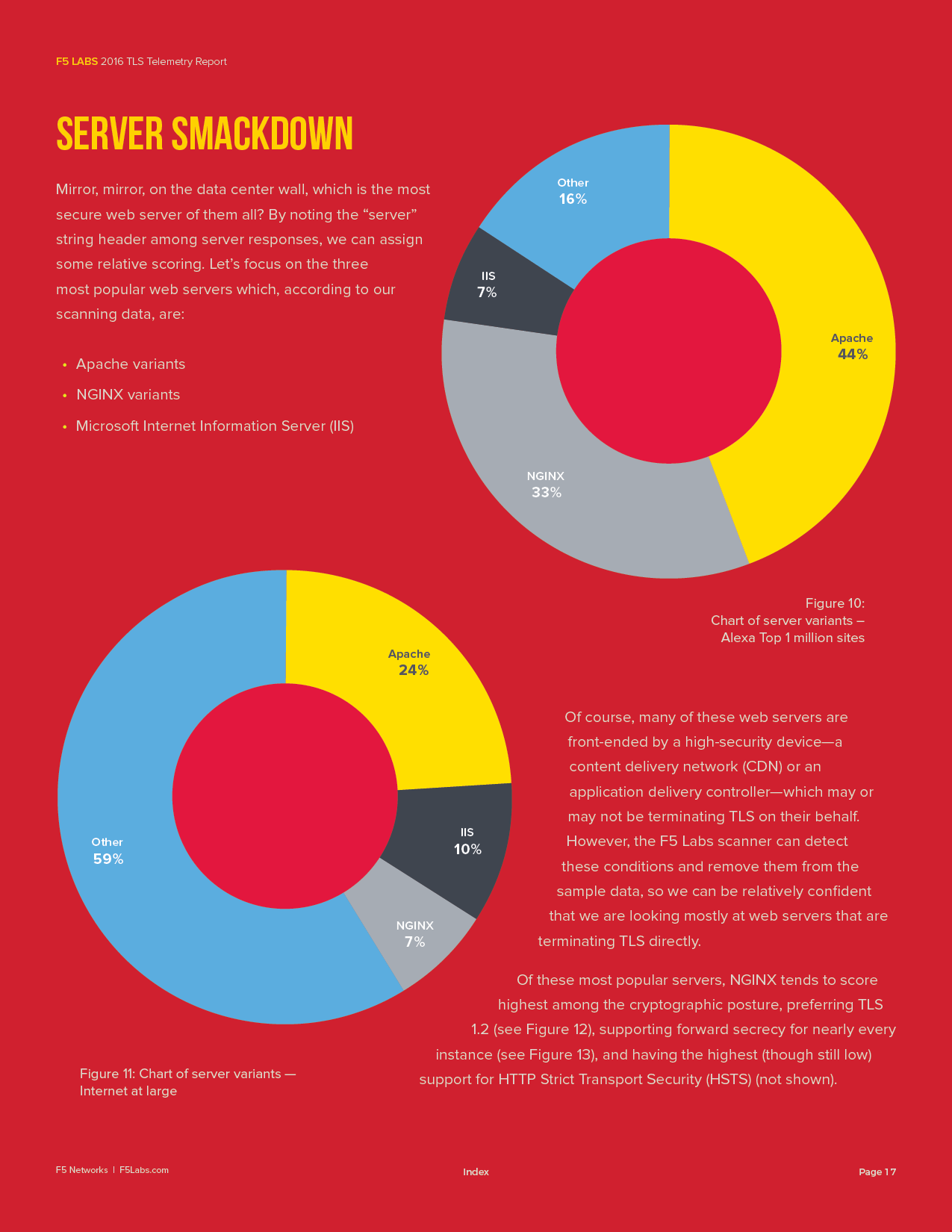The latest latest illustration for F5 Labs IoT Report.
F5 IoT Report Cover: The Growth and Evolution of Thingbots Ensures Chaos
Concept
[From the report] "The world is just now catching onto how useful IoT devices are; the industry is in its startup phase just scratching the surface of its future potential. If you follow the “diffusion of innovations” theory, we haven’t yet crossed the chasm of IoT potential, or mainstream global market adoption.
The cell phone is the only IoT device type that has hit the mainstream market with adoption rates past 50% of the global population. When the majority of the world is online, smart homes with dozens of internet enabled devices and smart cities will be everywhere instead of only in the hands of the early adopters. At that point, IoT thingbots could threaten global stability if we don’t start doing something about it now."
Full Version and Cover Version
Concept Sketch
Pencil drawing presented to F5 for concept approval.





















